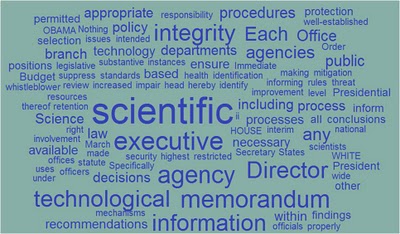If you haven’t been following this issue, OSTP (the Office of Science and Technology Policy in the Executive Office of the President) (for whom I once worked on agbiotech regulation- great perks, BTW, highly recommended as a DC experience!) released some guidelines, based on a President’s Memo, here.
Some people are aware of the situations which apparently triggered the perceived need for these guidelines. However, it is not really clear at this point what those were, nor how the memo or the guidelines would help resolve similar problems. As regular readers know, I am a fairly concrete thinker. It could just be that the concepts are too abstract for me. Nevertheless, in some old jobs I’ve had, I would be one of the folks in the agencies charged with implementing the guidelines. I can’t help but think we have better uses for the time of a small army of GS-14s and 15s than writing more policy on something that doesn’t seem very clear. Or even necessary, if we can’t clearly articulate what we are trying to keep others from doing. Even in our humble daily world of administrative appeals, we try to link facts found and conclusions drawn.
Also of concern is that Roger argues that in some cases the problem was not caused by the agencies (who are required to “fix it”) but by the EOP, when the agencies “did it right.” See his comments here.
By the way, if this is a policy on the use of science in policy development, then its development should follow its own rationale- it should use science and technology policy scholars (e.g., Jasanoff, Pielke, Sarewitz) to give scientific advice in its development.
Anyway, in this guest post for Roger Pielke, Jr.’s blog, I attempt to make sense of the President’s memo. Also, the comments and thought of David Bruggeman are of interest. My post is part of a series on Roger’s blog.
